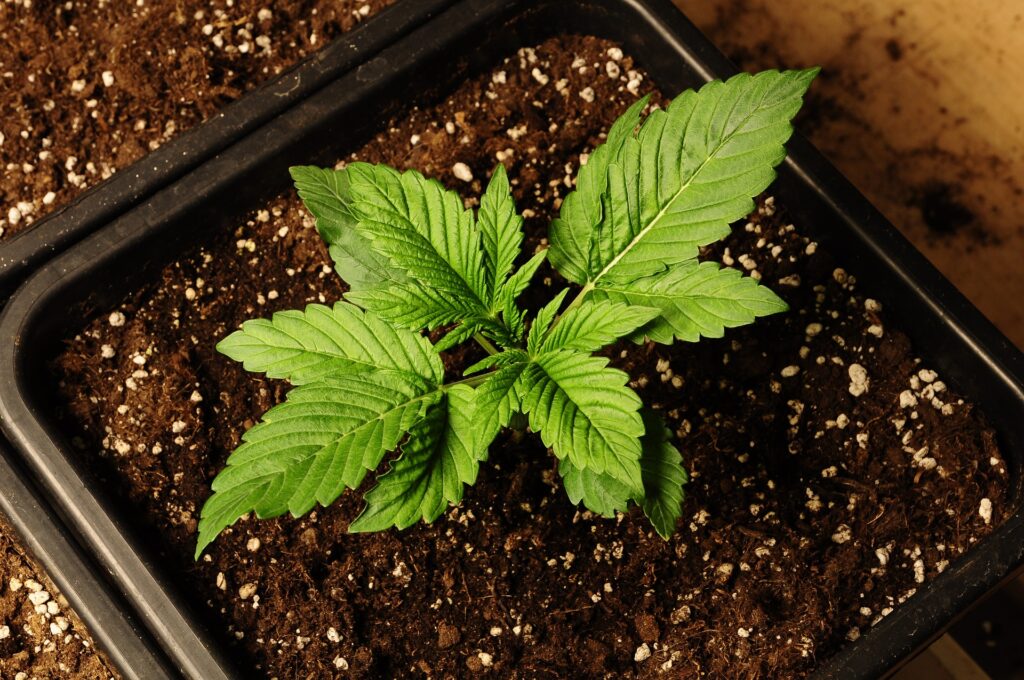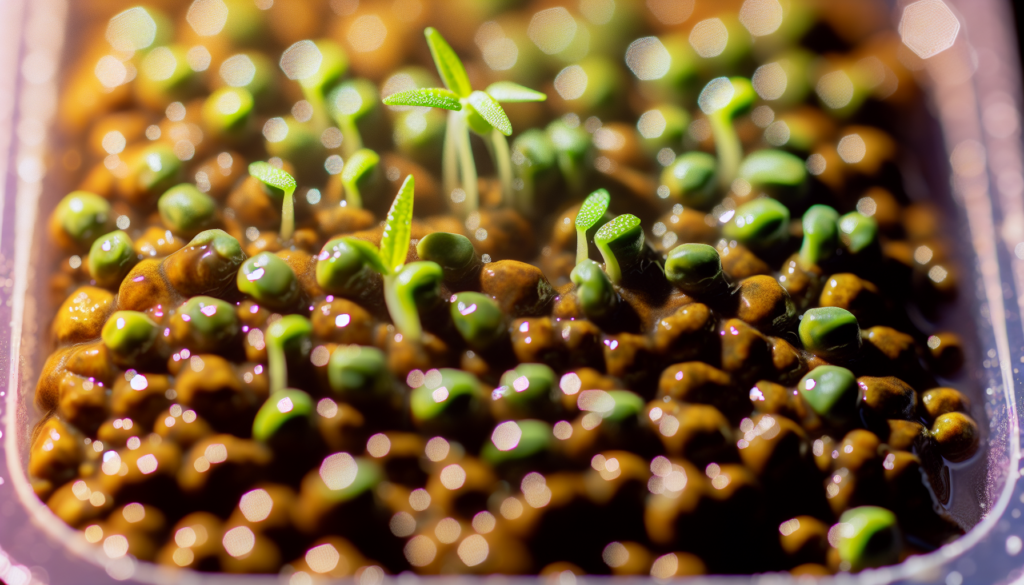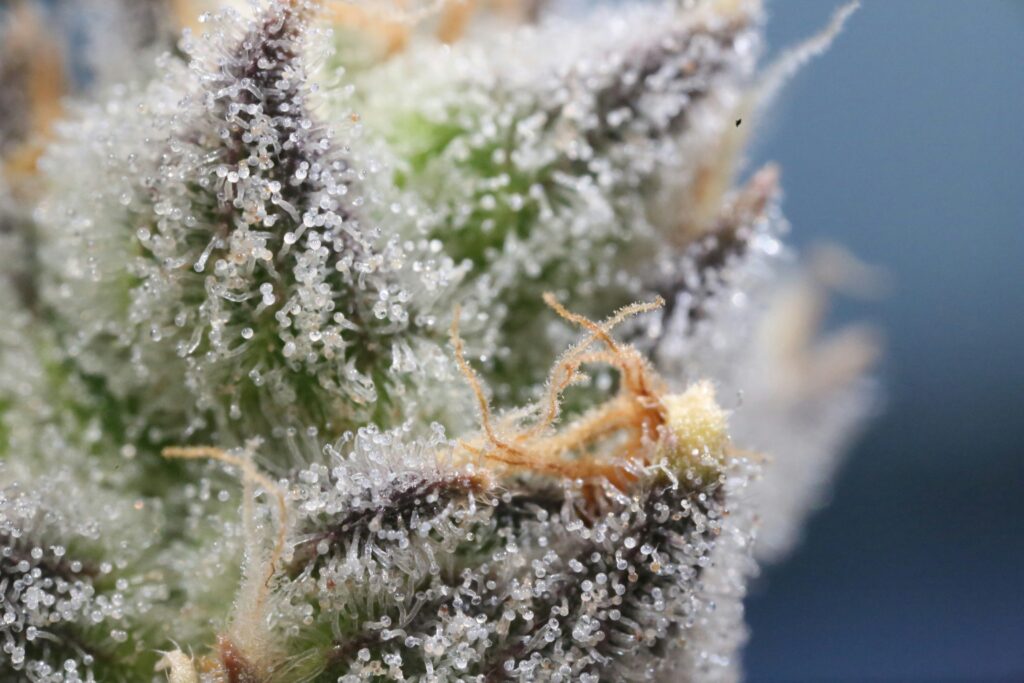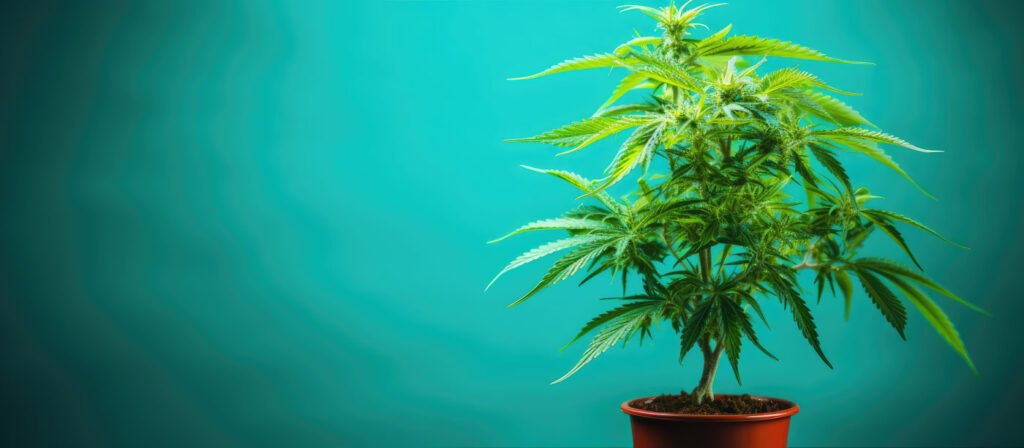Would you like to grow hemp yourself and are wondering where to start? With our practical guide, we take you step by step through the cultivation of cannabis, explain the soil and location requirements, go into variety selection and cultivation techniques and give you care tips to help your plants thrive. Here you will find everything you need to get started in the world of hemp cultivation.
The most important facts at a glance
- Successful hemp cultivation is based on the right choice of soil and location, whereby deep, humus-rich, calcareous soils with a regulated water supply and sufficient sunlight are preferred.
- When selecting varieties, a distinction must be made between industrial hemp for a wide range of industrial applications with a low THC content and CBD hemp for health-oriented products, which influences the objective of cultivation.
- The legal conditions in Germany allow the cultivation of industrial hemp with a THC content of less than 0.2% and from 1 April 2024, the cultivation of up to three female cannabis plants for personal consumption will be legalized.
Soil requirements and choice of location to grow the hemp plant

The success of hemp cultivation begins with the soil and the choice of location. Hemp preferred:
- Deep, humus-rich, calcareous and nutrient-rich soils with a regulated water supply
- Soils that are not compacted or waterlogged
- a pH value between 6 and 7.5, which corresponds to neutral to slightly alkaline
Organic substances such as humus, compost or worm humus improve soil quality by providing nutrients through microorganisms. A loose and airy soil structure enables a better supply of oxygen to the roots and thus promotes healthy hemp plant growth.
When choosing a location, you should select a place with plenty of sunlight, good ventilation and protection from strong winds. Whether you opt for indoor or outdoor cultivation depends on your individual circumstances and preferences. But no matter where you grow your hemp, remember that every plant needs enough space to develop fully.
With the right choice of soil and location, you can lay the foundation for successful hemp cultivation.
Variety selection: Industrial hemp vs. CBD/THC hemp
The next decision you need to make concerns the choice of variety. In hemp cultivation, a distinction is mainly made between industrial hemp and CBD/THC hemp. Industrial hemp, also known as fiber hemp, is mainly of the Cannabis Sativa species and has low THC levels and higher CBD levels, which sets it apart from THC-rich cannabis species. Industrial hemp is versatile and can be used for the production of textiles, insulating materials and foodstuffs, among other things. The cannabis plant therefore offers numerous possibilities for hemp cultivation.
In contrast, CBD hemp is primarily used to extract CBD oils. CBD products such as CBD oils are trending and seeing an increase in demand, with users seeking health-related benefits such as relaxation and calming effects. You should therefore take your individual goals and needs into account when choosing a variety.
Whether you opt for industrial hemp or CBD hemp, each type of hemp offers its own benefits and uses.
You can find recommendations for popular varieties and an overview of seed banks in our article about hemp seeds.
Sowing and germination

Once you have selected the ideal soil and location and decided on the right cannabis strain, the next chapter in your journey to successful cannabis cultivation begins: sowing and germination. The optimum sowing depth for hemp seeds is 10-15mm to provide the best chance of germination. A high humidity of 70-90% and a constant temperature between 22 and 25°C are ideal for germination.
It is important to note that hemp seeds require a moist germination medium, but it should be avoided that the medium is wet to prevent mold growth and lack of oxygen. The use of root stimulators and heat mats can support germination growth and keep the temperature constant. As soon as the root tips are visible, the seeds can be transplanted, taking particular care not to damage the radicles.
A grow room is therefore recommended, as the right temperature, lighting and climate can be constantly created here.
With these tips and techniques, you are ready to start growing your cannabis plants successfully.

As soon as your hemp plants start to germinate, the care and growth phase begins. During this phase, the plants need
- water regularly, but not excessively, to keep the soil slightly moist and avoid waterlogging
- Watering with compost tea and other organic mixtures such as molasses or feather meal to improve soil quality and provide nutrients
- Fresh, circulating air that can be supported by fans
These measures help to promote healthy plant growth.
Cannabis plants need a lot of nutrients for optimal growth:
- Lots of light
- Heat
- Water
- Fertilizer
It should be noted that the care requirements can vary depending on the hemp variety. With careful care and attention, you can ensure the healthy growth of your hemp plants and expect a rich harvest.
Irrigation
One of the most important elements in the care of cannabis plants is watering. Hemp plants require alternating periods of moisture and dryness during the growth phase in order to achieve effective aeration of the substrate and thus support root growth and the plant’s metabolism. Before watering, check that the substrate is not too moist to avoid the risk of waterlogging and the resulting lack of oxygen to the roots.
Slow and even watering distributes the water effectively in the substrate and enables the plants to absorb nutrients evenly. With the transition to the flowering phase, when the hemp plants have already developed an extensive root system, the changes in humidity and dryness are no longer so decisive for growth. Proper watering is crucial for the growth and health of your cannabis plants, so you should pay careful attention to these aspects.
Fertilization
Another important aspect in the care of hemp plants is fertilization. Organic fertilizers such as nettle tea, eggshell mix and coffee grounds are natural alternatives to synthetic fertilizers and promote healthy plant growth. Eggshells are an excellent source of calcium and can be added to the soil to prevent or correct a calcium deficiency.
Coffee grounds provide nitrogen and other important nutrients during the growth phase of cannabis and help to regulate the pH value of the soil. By using organic fertilizers, you can not only support the growth of your hemp plants, but also help to improve the soil and protect the environment.
Pest control
Despite all efforts to ensure proper care and watering, hemp plants can be attacked by pests. Biological pest control plays an important role here. In hemp cultivation, this can be achieved by using beneficial insects that eat other pests without harming the plants. Nettle tea acts as a natural fertilizer and insecticide that is particularly rich in nitrogen and minerals and is effective against common cannabis pests such as aphids and thrips.
The following insects can be used to control various pests:
- Flower bugs
- Lacewings
- Ladybug
- Predatory mites
- certain species of parasitic wasps
These insects are attracted to certain plants and environmental conditions and can effectively reduce pests such as spider mites, aphids and small caterpillars. With these natural methods, you can protect your hemp plants from pests and protect the environment at the same time.
Harvest time and harvesting methods

After you have successfully nurtured and nourished your cannabis plants, the exciting moment of harvest arrives. The ideal time to harvest hemp plants is based on visible signs such as
- the discoloration of the pistils from white to orange/amber
- an enlargement of the calyxes
- the yellowing of the leaves
- genetic cues of the variety with regard to flowering time
The trichomes, when examined closely with a magnifying lens, change color from clear to milky white, indicating an ideal harvest time to maximize THC content with 70% milky trichomes, or to amber for a broader cannabinoid spectrum. This is an important aspect when growing cannabis plants.
Harvesting techniques vary depending on your preferences and the specific needs of your plants. Some prefer to cut the branches close to the nodes, others cut the sugar leaves precisely without damaging the flowers. With the right harvesting method, you can maximize the quality and yield of your hemp plants.
Drying and storage

After harvesting, it is important to dry and store the hemp plants properly. Cannabis should be dried slowly at a room temperature of around 21°C, with a relative humidity of 50%, and the drying temperature should be between 15 and 18 degrees Celsius to prevent rapid evaporation of the terpenes. During the first 7 days of drying, the humidity should be around 60-65% and the cannabis should not lose more than 70% of its moisture to avoid over-drying.
The so-called curing of cannabis can take between three weeks and one month, during which time the flowers should be protected from light and the humidity in the curing containers should be between 55% and 65%. During the curing process, the flavor and quality improves as the moisture from the inside of the bud settles on the outside; the stored buds must be aerated daily during the first week.
Once the curing process is complete, cannabis flowers should be stored in airtight, opaque containers, ideally in vacuum containers or airtight bags to preserve aromas and flavors. With these drying and storage tips, you can ensure and maximize the quality of your hemp flowers.
Possible uses of hemp products
Hemp is not only a fascinating plant to grow, but also offers a variety of uses. Hemp products such as fiber, seeds and oil are versatile and offer both ecological benefits and health-promoting properties. As one of the oldest useful plants, hemp is also used for ropes, fabrics and in cosmetics. Hemp fibers have been awarded the EU “natureplus” label for their environmental compatibility as an insulating material. Hemp fibers are ideal for sustainable fashion due to their temperature-regulating and UV-protective properties.
In addition to fiber, hemp seeds and hemp oil are also nutrient-rich foods. They are rich in vegetable proteins, omega-3 and omega-6 fatty acids and provide important vitamins and trace elements. Hemp seeds can be used as an additive in smoothies, salads or baked goods and pressed into hemp oil. Gluten-free hemp flour made from de-oiled seeds is suitable for binding dishes or as part of the cereal flour in baking. With these diverse uses, hemp products are an enrichment for every household.
Legal framework for hemp cultivation

Although hemp offers a lot of advantages, the legal framework and the law for hemp cultivation in Germany are complex. The cultivation of industrial hemp is permitted in Germany as long as the hemp varieties are listed in the EU catalog of varieties and the THC content is below 0.2%. However, the cultivation of cannabis is prohibited for private individuals without a permit.
However, there is also good news: The private cultivation of up to three female cannabis plants per adult for personal consumption is expected to become legal from April 1, 2024. Non-commercial cultivation associations may only cultivate cannabis with official permission and distribute it to members for personal consumption in a strictly regulated manner. With this information, we are now up to date on the legal framework for cannabis cultivation in Germany and the discussion about cannabis legalization.
Summary
We have reached the end of our journey through the world of hemp cultivation. We have learned that hemp is a versatile and ecologically sustainable plant that offers a multitude of benefits. From the optimal soil and site conditions to the right variety selection, sowing and germination, care and growth, irrigation, fertilization and pest control to harvesting, drying and storage – hemp cultivation requires careful planning and care, but also offers many rewards.
Whether you want to grow hemp for its flowers, fibers, seeds or oil, each hemp variety offers unique benefits and uses. With the right knowledge and skills, you can start your own successful hemp cultivation. We hope that this blog post provides you with valuable guidance for your hemp cultivation and inspires you to explore the world of hemp cultivation for yourself.
Find out more about growing at CANNAFRIENDS and discover the right grow products to take away and start your own cultivation.
Frequently asked questions
The Federal Council will be on the 22nd. March 2024 the Cannabis Act. Private hemp cultivation is then allowed, but it is limited to a maximum of three female plants.
You can expect an average of 20 to 30 grams per hemp plant, but under ideal conditions it could also be 500 grams. This depends on various factors such as cultivation, lighting and care.
After legalization, you may grow up to three cannabis plants at home for your own consumption, provided that they are not accessible to minors. In addition, the possession of up to 50 grams of cannabis and up to three female flowering plants per adult are allowed.
No, the cultivation of hemp in the garden is still illegal in Germany and requires a permit for commercial hemp. It is important to comply with the legal regulations and to carry out the cultivation only with permission.






